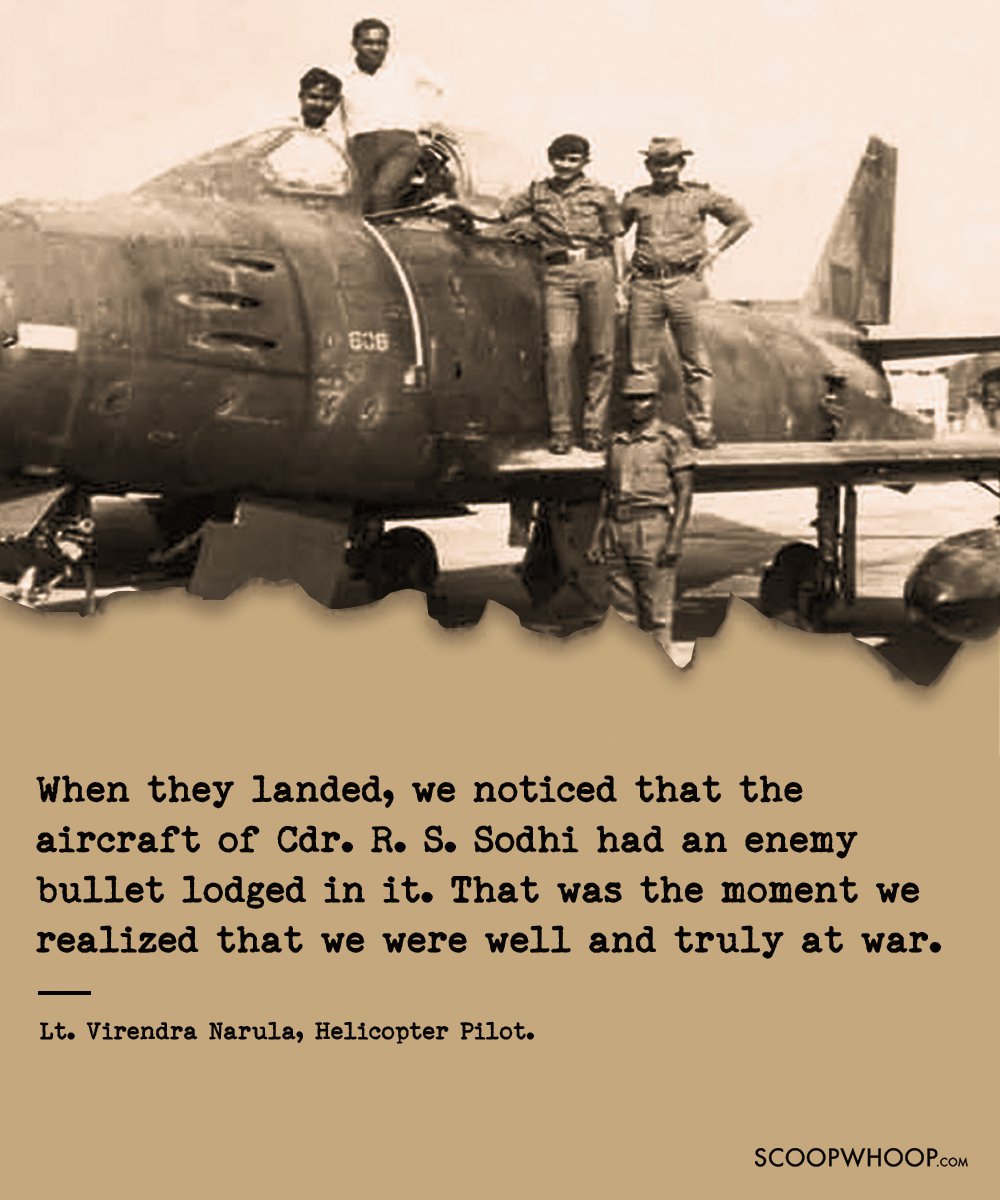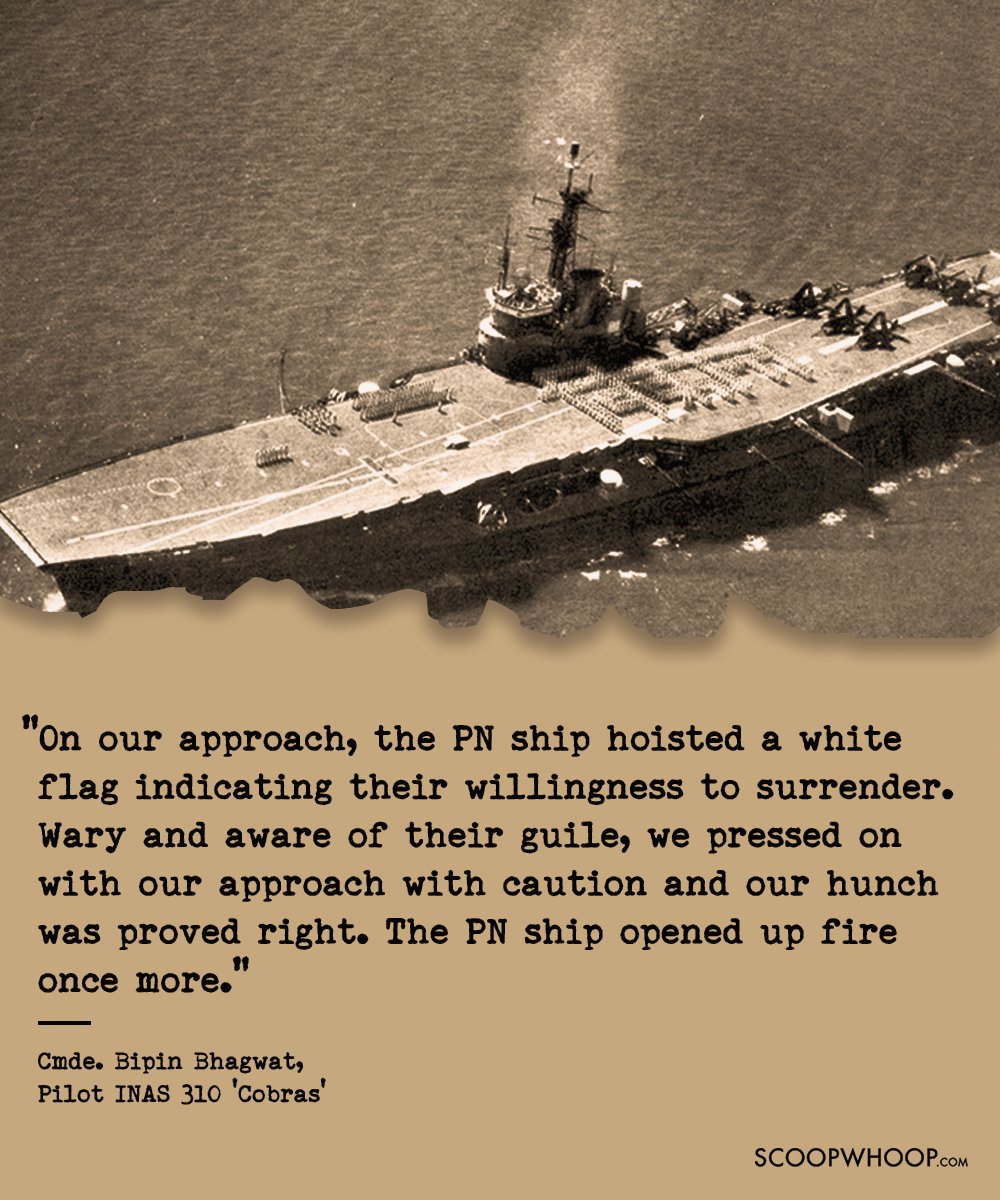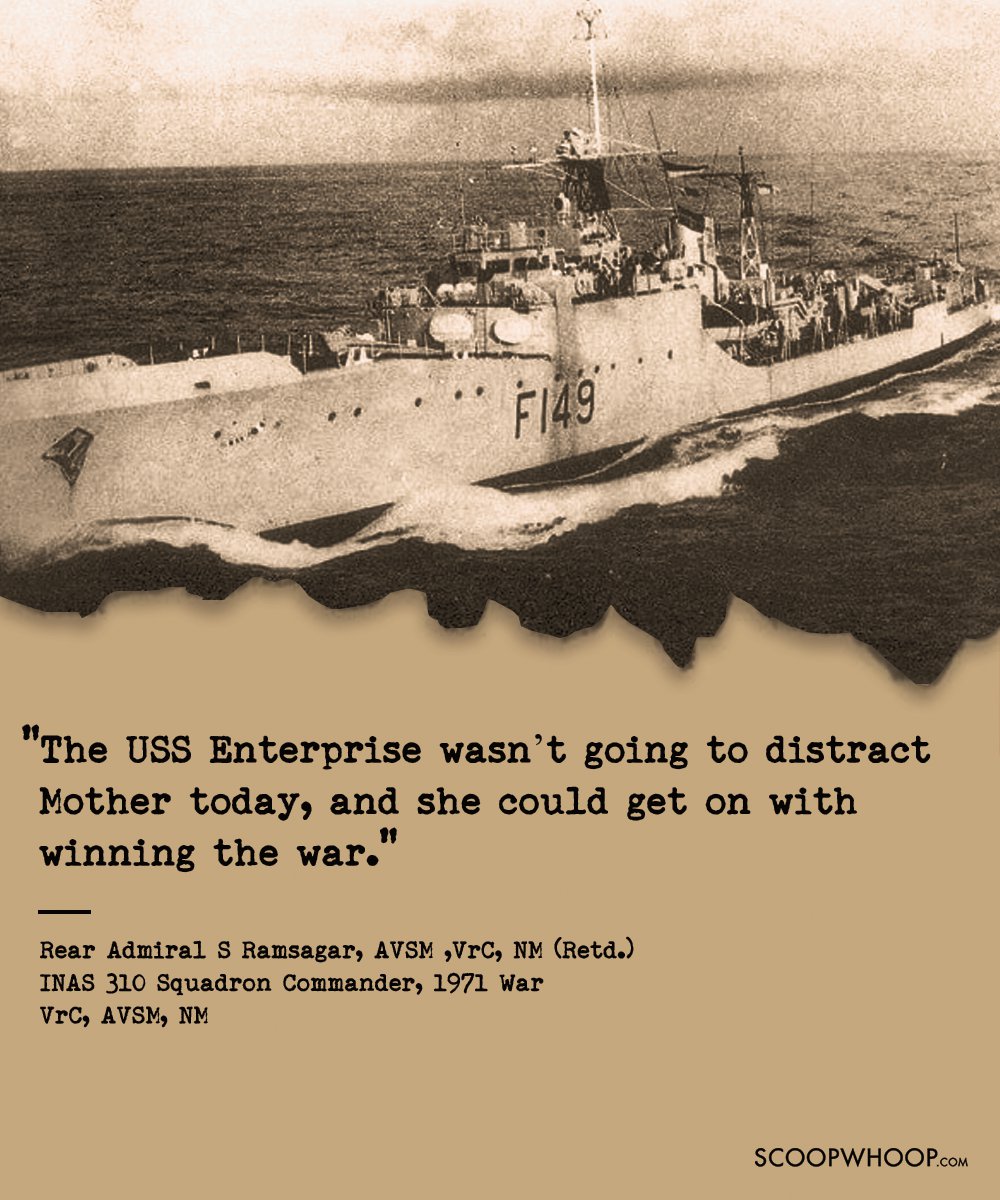To the civilians, 16th December 1971 was a historic day. It was the day of our heroic win over Pakistan and the birth of Bangladesh as a nation. It was with the herculean efforts and stoicism of the veterans aboard the INS Vikrant, who quite aptly call themselves the Sons of Vikrant that this feat was possible. On the 45th anniversary of this heroic win, it’s time we revisit some of the defining moments from the war that are bound to make you well up with pride.
1. An enemy bullet embedded in the hull of Cdr. R.S. Sodhi’s plane truly marked the beginning of the war.

Right after Prime Minister, Indira Gandhi’s nation address and formal declaration of war on the midnight of 3rd December 1971, the INS Vikrant was mobilised to close off the Eastern Sector of the Pakistan Navy. The Seahawks were deployed to bomb the Pakistani harbour and cripple the enemy. It was only after the aircraft returned to base that the enemy bullet lodged on Cdr. Sodhi’s ship was found. It was then extracted and mounted by the shipwright as the first official memento of war.
2. Cmde. Bipin Bhagwat’s gut instinct made him see through a mock-surrender and helped him thwart the destruction of INS Vikrant by a camouflaged enemy ship.

Things started looking up for the Indian front on the 10th December 1971. Having gained victory over Kushtia, East Bengal and crippled the Pakistani forces beyond repair, the INS Vikrant was taking positive strides in the war. However, on a routine reconnaissance mission led by Cmde. Bipin Bhagwat things soon turned intense. An hour into their mission they noticed a Pakistani Naval Ship camouflaged with trees waving the white flag. Immediately, the pilot ascended and communicated their find to the Mothership, only to find themselves in the middle of a full-blown artillery attack. It was Cmde. Bipin Bhagwat and his team’s quick thinking that saved them from impending death and caused the enemy ship to sink following official orders. The Sons of Vikrant tasted victory once again.
3. Lt. V. K. Datta’s wise decision to not engage with enemy forces in the face of improving situations proves that gallantry lies in wisdom too.

By 12th December 1971, the Soviets had deployed their warheads to safeguard the Indian forces from the intervening U.S. Fleet and things were beginning to turn in the Indian forces’ favour. After a strike, Lt. V. K. Datta of the 300 Squadron spotted a defensive formation in the air on his journey back to the Mothership. Having informed the Formation Leader of this development, he was left with a dangerous dilemma. He could either engage in single-handed combat, take down the enemy craft and risk complicating the war situation or he could leave and eventually come back with his entire squadron and an informed battle strategy to take them head-on. He had understood that sometimes war needs diplomacy more than hands-on combat. His wise move let the INS Vikrant prepare for the eventual attack.
4. In all of the 286 attacks planned on the enemy by INS Vikrant there was no damage to civilian life or property.

There’s always collateral damage in war, such is life. But in spite of the heavy bloodshed on the war front, the INS Vikrant reported zero Bangladeshi civilian casualties in the entire 14 days of combat. Even with the Pakistani forces razed to the ground, not a blemish could be found on the Khulna, Chittagong and Cox’s Bazaar settlements. In fact, right after the war when the soldiers and naval officers from INS Magar landed, they were welcomed with open arms like heroes, much to their surprise. On enquiring, they came to know of the gushing love and respect that the locals felt for INS Vikrant, such was it’s storied reputation.
5. The deployment of the USS Enterprise to help Pakistan found the Sons of Vikrant ready for combat.

Things were beginning to get even more intense on the war front. There were potent rumours of U.S. 7th Fleet being sent to Pakistan’s aid by the then President Richard Nixon. The intervening forces were formidable adversaries who challenge the Indian war situation head front. Defence Minister Jagjeevan Ram’s statement about India’s intention to meet the foreign threat head-on was also intensifying the situation. All naval forces on the Bay of Bengal were alerted to keep a lookout for the approaching U.S. Fleet. INS Vikrant spearheaded this charge and sent their submarines and sorties for recon on multiple occasions. Rear. Admiral S. Ramsagar recounts how everyone on board was prepared to enter combat without any distractions. After multiple recon missions, the crafts confirmed the lack of sighting in the Indian waters. It was later confirmed that the American intervention was called off, letting the INS Vikrant get on with defeating the enemy.
6. R. Adm. Santosh Kumar Gupta made the brave decision to land the aircraft on the deck with armed bombs, preferring to save the precious aircraft over his own life.

On 7th December 1971, the Indian Navy had successfully closed off the Chittagong harbour, crippling the escape of high-ranking Pakistani officials. R. Adm. Santosh Kumar Gupta was returning with his squadron after a successful bombing mission. It was then that they realised that the release mechanism to the remaining ammunition had conked off. They couldn’t land on the INS Vikrant with armed bombs, lest they blow up the Mothership and all within. They made the heroic decision to risk their lives and attempt at safely landing on the deck. The live bombs were immediately disarmed and the crisis was averted.
There are only so many ways that one can show true bravery and valour towards their country and each of these facts serve as fitting examples. It has been 45 years since the decisive naval victory and the gripping tales of these bravehearts on their Mother, INS Vikrant deserves to be etched in memory forever. Bajaj V, in their heartwarming new initiative, named Mission Vikrant 1971 Indo-Pak War Diaries, is attempting to keep the memory of India’s stellar victory alive. On the 45th anniversary of the war, they’re presenting a collection of first-hand stories of the 14-day war, as narrated by the very same men who served aboard the INS Vikrant. These stories feature some of the most hair-raising tales of bravery ever. Read them here.

















